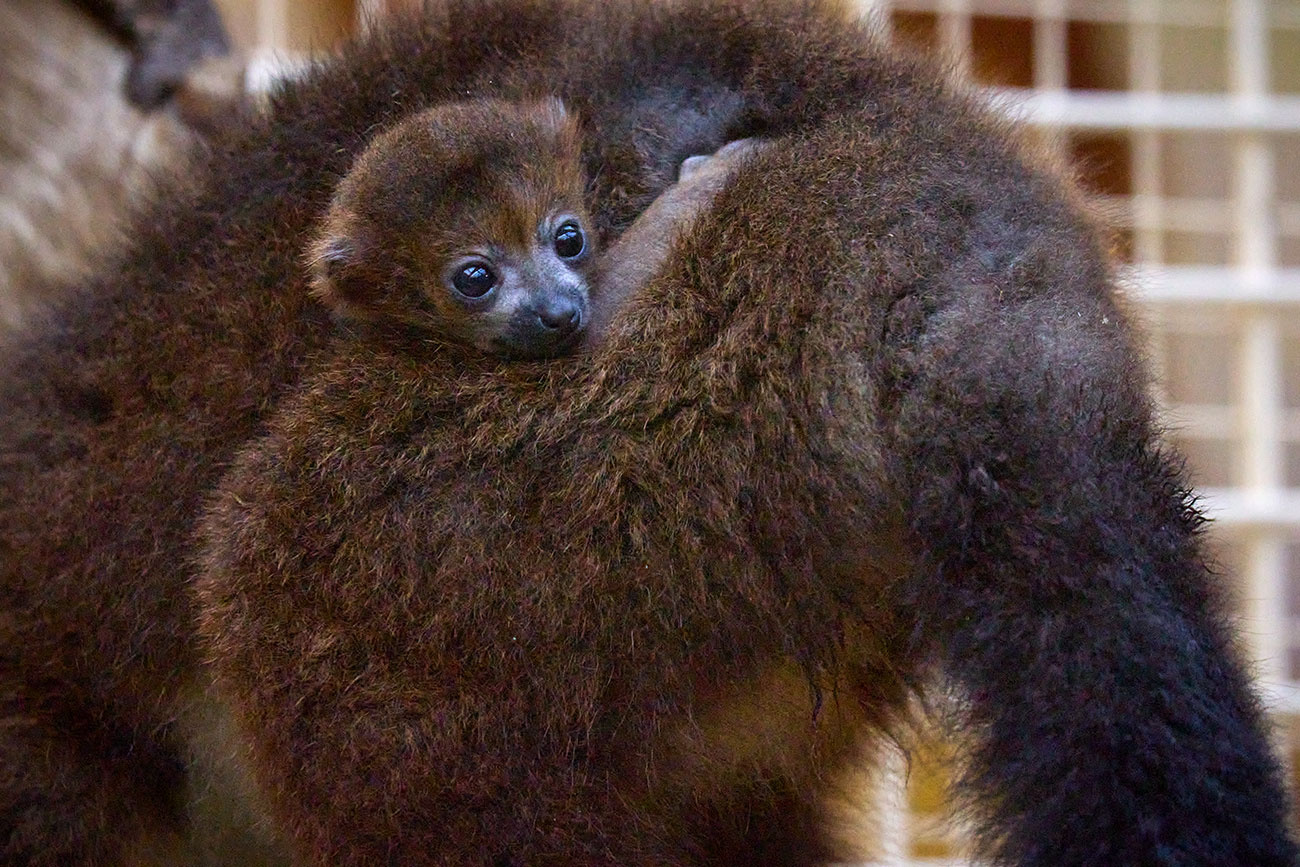Birth of a Red-bellied lemur

Our one-month old Red-bellied lemur is becoming more and more alert and active. This is the third young successfully raised by this pair formed in spring 2019. The family now includes 4 individuals: the breeding pair, a one-year old female and the newborn.

In Europe births occur in spring while in Madagascar they take place between September and October. After a gestation of 4 months, the female gives birth to a single young that she carries on her belly or between her upper thigh and her lower abdomen. Around 4 to 5 weeks of age, the young starts to be carried on its mother's back, sometimes even on its father's. Weaning occurs at 6-7 months of age.

Red-bellied lemurs mainly feed on fruits, flowers, seeds and leaves, thus playing an important role as seed-dispersers in the natural environment by expelling undigested seeds in their feces. Invertebrates, and particularly millipedes, constitute a significant part of their diet at certain times of the year.
The species is currently classified as “Endangered” on the IUCN Red List and is declining in Madagascar because of deforestation, habitat fragmentation and poaching. It is becoming increasingly rare in many areas despite its large home range.
Palmyre Conservation contributes to the safeguarding of red-bellied lemurs in Madagascar by supporting the action of Helpsimus, an association that monitors and protects about thirty individuals divided into 5 groups on its conservation site. One of these groups is fully habituated to the human presence and can be visited by ecotourists.